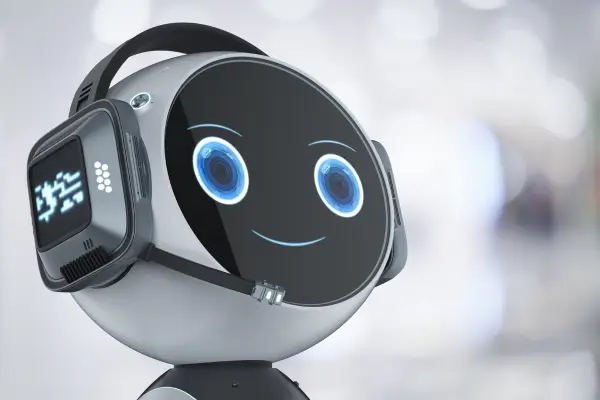AI-powered chatbots are transforming customer support. They provide instant, personalized, and efficient assistance.
Chatbots reduce wait times and enhance satisfaction. They operate 24/7, handling FAQs and complex queries effortlessly.
Advanced tools like NLP and sentiment analysis make chatbots smarter. Voice integration adds a new level of convenience.
Cost savings and scalability benefit businesses. Faster resolutions improve the overall customer experience.
Implementing chatbots requires planning. Start by identifying needs and choosing the right platform.
By embracing AI chatbots, businesses stay competitive. They deliver exceptional support in a digital-first world.
1. What Are AI-Powered Chatbots?
AI-powered chatbots are software programs designed to simulate human conversation using artificial intelligence, machine learning (ML), and NLP. Unlike traditional rule-based chatbots, AI-driven chatbots can:
- Understand natural language instead of relying on predefined scripts.
- Learn from past interactions to improve future responses.
- Handle complex customer queries with more accuracy.
- Provide 24/7 support without human intervention.
Example: A chatbot on an e-commerce website can assist customers by recommending products, tracking orders, and answering FAQs—all without human assistance.
Why It Matters: AI-powered chatbots enhance efficiency, cost savings, and customer satisfaction by automating responses and streamlining support.
2. How AI Chatbots Are Transforming Customer Support
AI-powered chatbots are reshaping customer service by improving response speed, personalization, and accessibility.
A. Faster Response Times
Customers expect instant answers, and AI chatbots provide immediate assistance without long wait times.
Example: A telecom company uses a chatbot to resolve common customer issues, reducing wait times from 10 minutes to under 30 seconds.
B. 24/7 Availability
Unlike human agents, chatbots operate round the clock, ensuring customers receive support even outside business hours.
Example: A travel booking chatbot helps customers modify reservations or inquire about flight status at any time.
C. Personalized Customer Interactions
AI chatbots analyze customer behavior and preferences to deliver personalized responses and recommendations.
Example: An online clothing store chatbot suggests outfits based on a user’s browsing history and previous purchases.
D. Multilingual Support
Businesses with a global audience benefit from AI chatbots that communicate in multiple languages, breaking down language barriers.
Example: A customer in Spain can interact with a chatbot in Spanish, while another in Japan receives assistance in Japanese.
Why It Matters: AI chatbots reduce operational costs while improving the overall customer experience.
3. Key Benefits of AI-Powered Chatbots in Customer Support
AI-driven chatbots offer numerous advantages for businesses and customers alike.
A. Cost Savings for Businesses
- Reduces the need for large customer service teams.
- Automates repetitive tasks, allowing human agents to focus on complex issues.
- Lowers operational costs by minimizing reliance on call centers.
B. Increased Customer Satisfaction
- Provides instant responses, reducing frustration from long wait times.
- Offers accurate and relevant solutions.
- Enhances engagement with personalized interactions.
C. Scalability
- Handles thousands of inquiries simultaneously.
- Easily integrates with existing CRM and support systems.
- Supports business growth without the need to hire more agents.
Example: A bank chatbot processes hundreds of loan applications daily, reducing the workload for human employees.
Why It Matters: AI chatbots improve efficiency, reduce costs, and enhance customer loyalty.
4. Challenges and Limitations of AI Chatbots
Despite their advantages, AI chatbots still face certain limitations.
A. Lack of Emotional Intelligence
While AI chatbots can mimic human conversation, they lack empathy and emotional understanding.
Example: A frustrated customer may prefer speaking with a human rather than receiving automated responses.
B. Handling Complex Issues
AI chatbots are not always equipped to manage highly technical or sensitive customer inquiries.
Example: A chatbot might struggle to resolve legal or medical concerns that require human expertise.
C. Risk of Misinterpretation
Natural language processing is improving, but chatbots can still misunderstand complex or vague queries.
Example: A customer asks, “Can I change my order?” but the chatbot misinterprets it as a cancellation request.
D. Privacy and Security Concerns
Businesses must ensure that AI chatbots comply with data privacy regulations, such as GDPR and CCPA, to protect customer information.
Solution: Companies should implement secure data encryption and strict access controls for chatbot interactions.
Why It Matters: Overcoming these challenges is key to maximizing chatbot effectiveness while ensuring positive customer experiences.
5. The Future of AI-Powered Chatbots in Customer Support
As AI technology advances, chatbots will continue to evolve and offer even more sophisticated customer service capabilities.
A. Integration with Voice Assistants
AI chatbots will become more conversational with voice-enabled interactions, integrating with smart assistants like Alexa, Google Assistant, and Siri.
Example: Customers will be able to ask a chatbot questions using voice commands instead of typing.
B. AI-Driven Sentiment Analysis
Future chatbots will incorporate sentiment analysis to recognize customer emotions and adjust responses accordingly.
Example: If a chatbot detects frustration in a customer’s message, it may escalate the issue to a human agent for faster resolution.
C. Proactive Customer Support
Instead of waiting for customers to reach out, AI chatbots will proactively assist users based on behavior tracking.
Example: A chatbot detects a failed payment attempt and immediately offers solutions before the customer contacts support.
D. Human-AI Collaboration
Hybrid models will combine AI chatbots with human agents to provide seamless customer support.
Example: A chatbot answers basic questions, but when an issue becomes too complex, it transfers the customer to a live agent.
Why It Matters: The future of AI-powered chatbots will be more personalized, efficient, and emotionally intelligent, leading to smarter and more human-like interactions.
6. How Businesses Can Implement AI Chatbots Successfully
For companies looking to integrate AI chatbots into their customer support strategy, here are key steps to ensure success:
Step 1: Identify Customer Needs
- Analyze common customer inquiries and pain points.
- Determine which tasks can be automated vs. requiring human support.
Step 2: Choose the Right AI Chatbot Platform
- Select platforms like ChatGPT, Drift, Intercom, or Freshchat based on business requirements.
- Ensure chatbot integration with CRM and customer service software.
Step 3: Train the Chatbot with Real Data
- Use historical customer interactions to improve chatbot responses.
- Continuously update AI models for better accuracy and adaptability.
Step 4: Monitor Performance and Optimize
- Track customer satisfaction scores, chatbot response accuracy, and resolution rates.
- Collect user feedback and make adjustments based on real interactions.
Why It Matters: Implementing AI chatbots strategically can streamline support operations while improving customer satisfaction.
Conclusion
The future of customer support is being revolutionized by AI-powered chatbots, making interactions faster, smarter, and more efficient. Businesses that adopt this technology can reduce costs, scale support services, and enhance customer satisfaction.
While AI chatbots still have limitations, continuous advancements in machine learning, voice recognition, and sentiment analysis will lead to more human-like interactions. The key to success lies in balancing automation with human support, ensuring customers receive the best possible experience.
As businesses embrace AI-powered chatbots, they will be better positioned to meet growing customer expectations, improve engagement, and drive long-term loyalty in the digital age.




